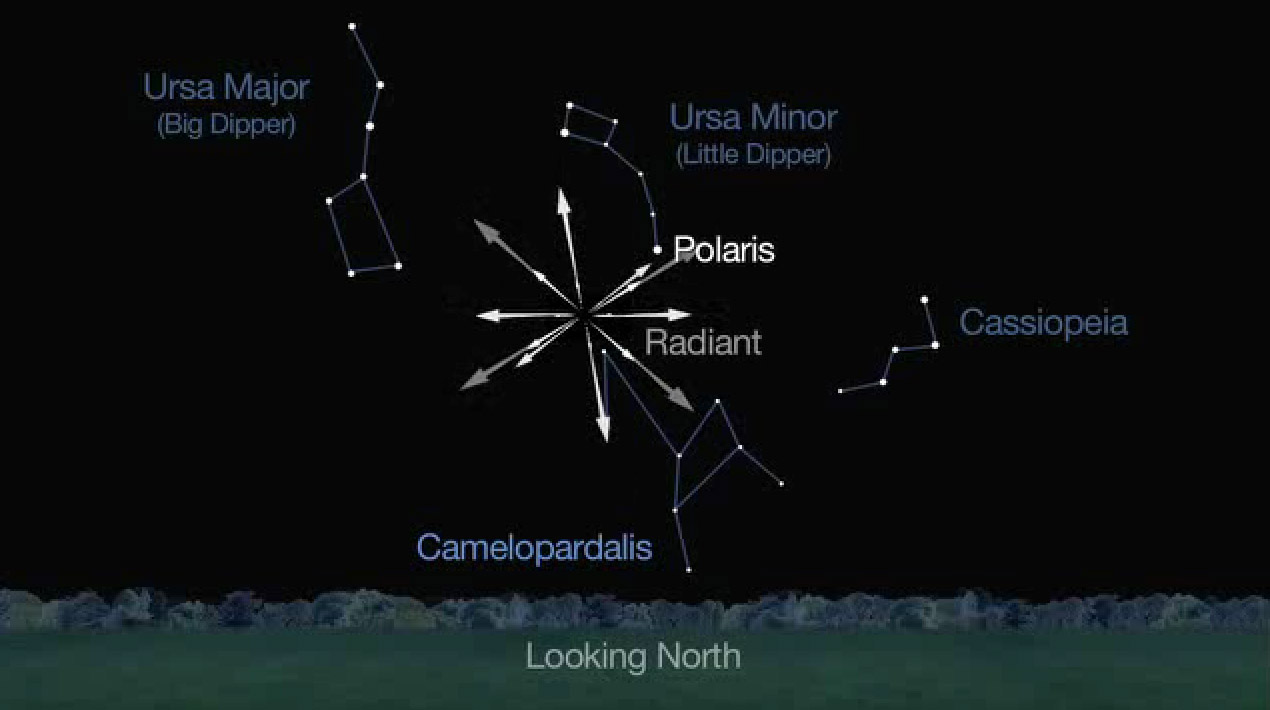
Skywatchers have something exciting to look forward to this month — a possible new meteor shower that could send up to 1,000 shooting stars per hour streaking through the sky.
On May 23 and May 24, Earth should plow through debris shed by Comet 209P/LINEAR, astronomers say. These extraterrestrial particles could give stargazers an incredible show as they burn up in the planet's atmosphere — or the anticipated fireworks may fizzle out.
"This potential new shower is so new that astronomers aren't sure what to expect," narrator Jane Houston Jones said in a skywatching video released by NASA's Jet Propulsion Laboratory in Pasadena, Calif., on April 30. "Predictions run from less than 100 meteors per hour up to an unlikely but possible meteor storm as high as 1,000 per hour." [New Meteor Shower from Comet 209P/LINEAR (Gallery)]

The shower should appear to radiate from a point near Polaris (the North Star), which lies at the end of the handle of the Little Dipper, Houston Jones added. Observers in southern Canada and the continental United States are particularly well-placed to see the meteors.
"Set your alarm clock for midnight on May 23 and 24, and keep your eyes peeled for slow-moving but bright meteors — both nights if you can," she said.
The skies should be relatively dark on those days as well; the moon will be waning toward its new phase, which occurs May 28.
Comet 209P/LINEAR — which was discovered in 2004 by the Lincoln Near-Earth Asteroid Research project (hence the name) — makes one trip around the sun every five years or so. The comet itself is relatively small and dim, but it may put on a special show thanks to orbital dynamics.
Get the Space.com Newsletter
Breaking space news, the latest updates on rocket launches, skywatching events and more!
"Given the current orbit of the comet, all the [debris] trails ejected between 1803 and 1924 do fall in the Earth's path in May 2014!" Jeremie Vaubaillon, of the Institut de Mécanique Céleste et de Calcul des Éphémérides in France, told Space.com in 2012. "As a consequence, this shower might as well be a storm."
The new meteor shower would be the second one to grace May's night sky. The first one, known as the Eta Aquarids, peaks overnight tonight (May 5-6).
The Eta Aquarid meteor shower is generated by debris sloughed off by the famous Halley's Comet, which last cruised by Earth in 1986 and won't be back again until 2061. Observers with dark, clear skies might be able to spot up to 60 meteors during the shower's peak tonight, experts say.
You can still see the meteors even if your views are marred by clouds or bright city lights. You can watch webcasts of the Eta Aquarid meteor shower Monday night here on Space.com, courtesy of NASA and the Slooh community telescope.
Follow Mike Wall on Twitter @michaeldwall and Google+. Follow us @Spacedotcom, Facebook or Google+. Originally published on Space.com.
Join our Space Forums to keep talking space on the latest missions, night sky and more! And if you have a news tip, correction or comment, let us know at: community@space.com.

Michael Wall is a Senior Space Writer with Space.com and joined the team in 2010. He primarily covers exoplanets, spaceflight and military space, but has been known to dabble in the space art beat. His book about the search for alien life, "Out There," was published on Nov. 13, 2018. Before becoming a science writer, Michael worked as a herpetologist and wildlife biologist. He has a Ph.D. in evolutionary biology from the University of Sydney, Australia, a bachelor's degree from the University of Arizona, and a graduate certificate in science writing from the University of California, Santa Cruz. To find out what his latest project is, you can follow Michael on Twitter.
